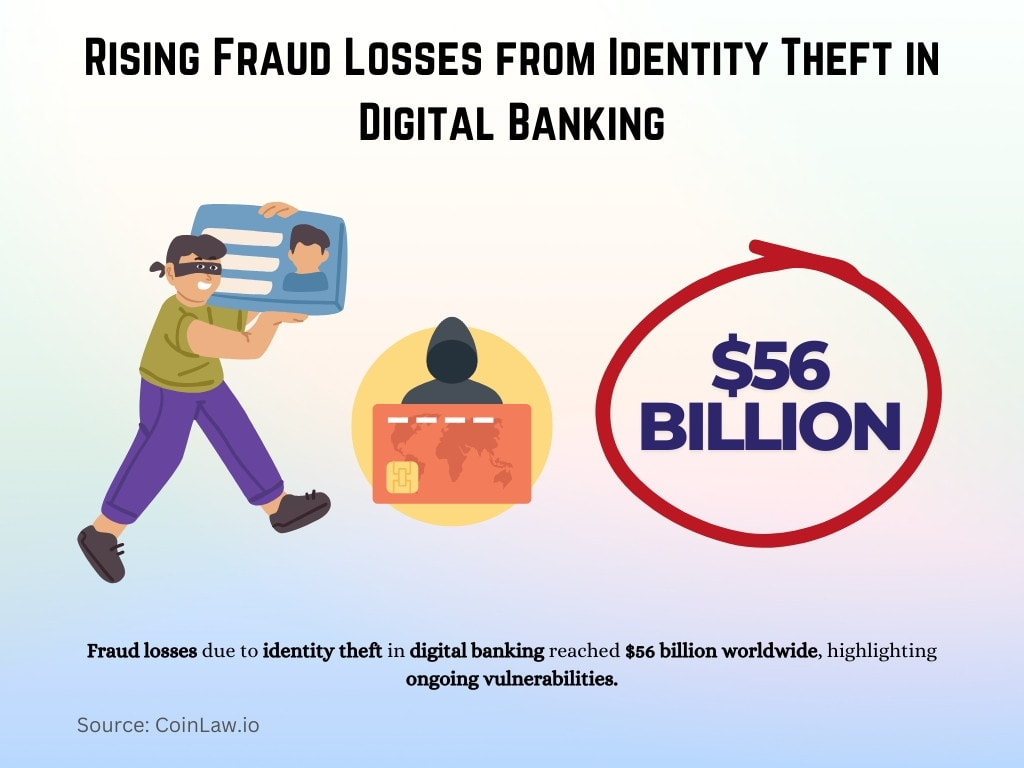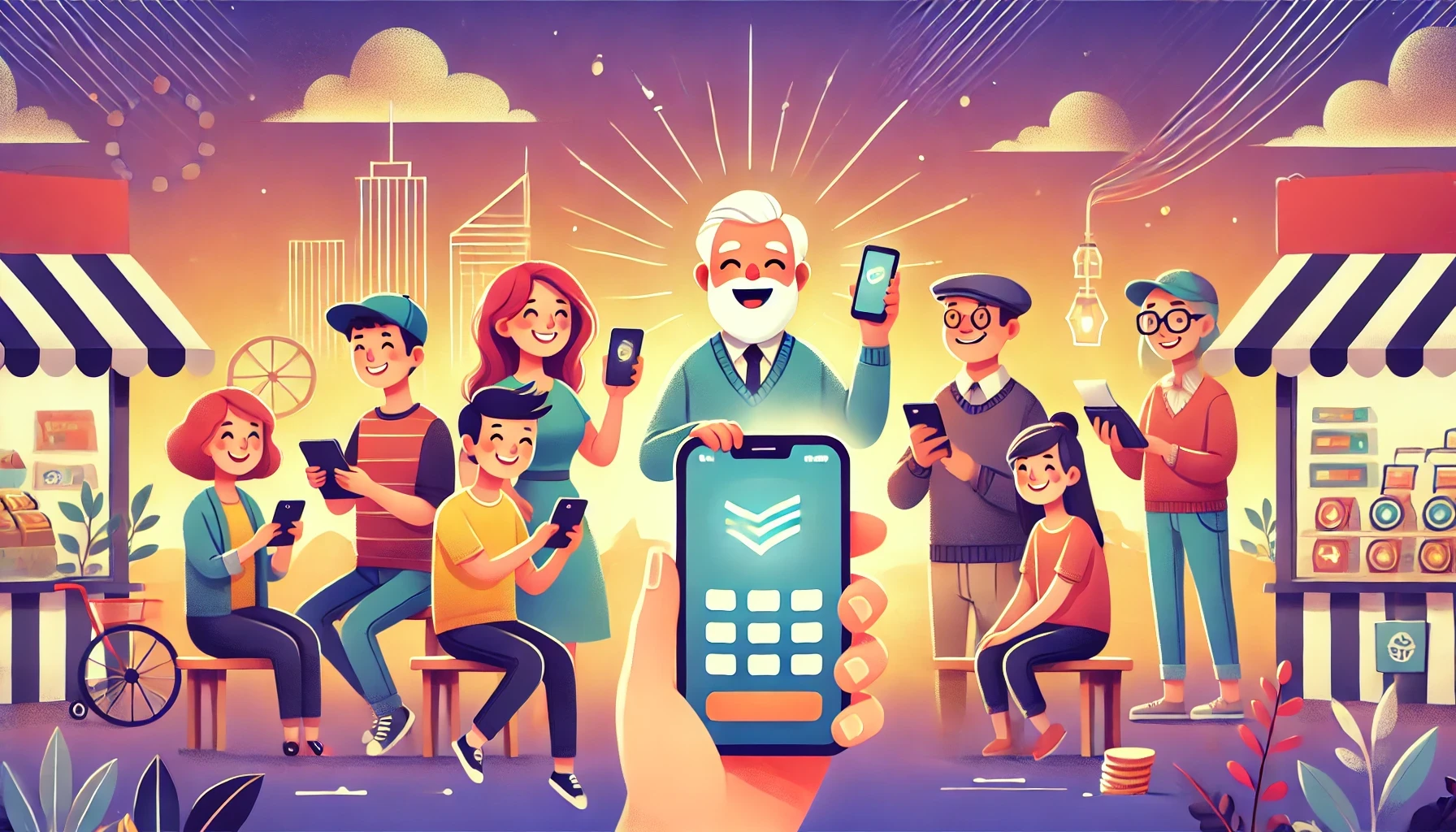Digital Banking Statistics 2025: User Growth, AI, and Security Insights
Updated · Feb 04, 2025

The transformation of traditional banking into a digital-first experience has been rapid and expansive over the past decade. What started as simple online transactions has now morphed into fully digital banking solutions that can be accessed from any location at any time. This shift has been driven by consumer demand for convenience, security, and speed. In 2025, digital banking is no longer just a novelty—it’s a necessity for millions of users worldwide.
Editor’s Choice: Key Statistics Overview
- Over 80% of U.S. adults have used digital banking services in 2023, showing a steady rise in adoption.
- 69% of all banking customers globally now prefer using mobile apps to access banking services.
- The global digital banking market reached $18.6 billion in 2023 and is projected to grow at a 12.8% compound annual growth rate (CAGR) until 2028.
- Neobanks, also known as digital-only banks, are estimated to serve 39 million users in the U.S. by the end of 2024.
- Mobile payments have seen a significant rise, accounting for $1.35 trillion in transactions worldwide in 2023.
- 74% of banking executives believe that digital services will soon become the core focus of their business models.
- Fraud prevention technologies saw an investment surge of $10 billion globally in 2023 as the industry fights increasing digital threats.

Growth of Digital Banking and User Adoption Rates
- The number of digital banking users worldwide is projected to surpass 3.6 billion by 2024, a substantial increase from 2.8 billion in 2020.
- In the U.S., roughly 203 million people are using some form of digital banking in 2023, up from 197 million in 2022.
- 68% of consumers aged 18-34 report they primarily use digital platforms for managing their finances, compared to just 28% of those aged 65 and older.
- Digital banking transactions grew by 23% year-over-year (YoY) in 2023, driven by increased reliance on mobile and online banking apps.
- In the Asia-Pacific region, digital banking adoption rates have surged, with 95% of consumers using digital banking services in countries like South Korea and Singapore.
- 30% of U.S. consumers said they switched banks in 2023 due to the quality of digital services offered, emphasizing its critical role in customer retention.
- Latin America is one of the fastest-growing markets for digital banking, with user numbers increasing by 45% between 2022 and 2023, particularly driven by countries like Brazil and Mexico.
| Age Group | Percentage of Digital Banking Users |
| 18-34 | 68% |
| 65 and older | 28% |
Mobile Banking Usage and Statistics
- In 2023, over 57% of all banking transactions in the U.S. were made through mobile devices, an increase from 50% in 2022.
- The number of mobile banking app downloads globally reached 5.2 billion in 2023, marking a 20% growth compared to the previous year.
- Chase Mobile remains the most downloaded banking app in the U.S., with 56 million active users by the end of 2023.
- 79% of mobile banking users in the U.S. cite convenience as their primary reason for using banking apps.
- Biometric authentication features, such as fingerprint and facial recognition, were used by 60% of mobile banking app users in 2023.
- 37% of U.S. adults now rely solely on mobile banking, meaning they do not use physical bank branches at all.
- Mobile wallet transactions are set to exceed $2 trillion globally in 2024, with Apple Pay leading the market in mobile payments.
Digital Banking Statistics by Demographics
- Millennials (ages 25-40) are the most frequent users of digital banking, with 93% using at least one form of digital banking service in 2023.
- Gen Z (ages 18-24) saw a 45% increase in mobile banking usage in 2023 compared to the previous year.
- 82% of Baby Boomers (ages 57-75) now use digital banking, up from 76% in 2022, signaling wider adoption across older generations.
- Women are leading the charge in mobile banking adoption, with 65% reporting that they use banking apps, compared to 35% of men in 2023.

- Urban residents are more likely to use digital banking than rural residents, with 89% of urban consumers using digital banking compared to 62% in rural areas.
- In Africa, 67% of the population in Nigeria uses digital banking, marking one of the highest adoption rates on the continent in 2023.
- Households earning over $100,000 annually are twice as likely to use multiple digital banking platforms compared to those earning less than $50,000.
Digital Banking Usage Statistics
- Digital-only banks like Chime and Revolut have grown rapidly, with Chime gaining 15 million active users in 2023.
- Cryptocurrency trading through digital banking platforms saw a 30% increase in 2023, with more banks integrating crypto features.
- 85% of U.S. banks offer mobile check deposit services, and over 60% of consumers used this feature in 2023.
- Customer service via chatbots in banking apps handled 75% of consumer inquiries in 2023, showcasing the rise of AI-powered assistance.
- Contactless payments through digital wallets like Google Pay and Samsung Pay increased by 41% YoY in 2023.
- The average time spent on digital banking apps increased to 9.5 minutes per session, reflecting deeper consumer engagement in 2023.
- Digital loan applications accounted for 65% of all personal loans processed in 2023, compared to 55% in 2022.
AI and Automation in Digital Banking
- AI-driven chatbots handled over 80% of routine banking inquiries in 2023, offering services such as balance checks and transaction histories.
- Banks that implemented AI-based fraud detection systems reduced fraud incidents by 27% in 2023, saving billions in potential losses.
- 42% of banks globally are using machine learning algorithms to enhance their predictive analytics and customer service.
- AI-driven personalized financial advice tools are now used by 35% of digital banking customers, a 15% increase from 2022.
- Automation has cut the average cost of transaction processing by 45%, allowing banks to scale services while reducing operational costs.
- AI-powered mortgage approval processes have reduced processing time by 30%, helping banks compete in the fast-paced housing market.
- The integration of voice-activated AI assistants in banking apps increased, with 25% of mobile banking users utilizing voice commands to initiate transactions in 2023.
| AI/Automation Application | Percentage/Impact |
| Routine Banking Inquiries Handled by AI Chatbots | 80% |
| Fraud Reduction via AI-Based Systems | 27% reduction |
| Banks Using Machine Learning for Predictive Analytics | 42% |
| Use of AI-driven Personalized Financial Advice Tools | 35% |
| Transaction Processing Cost Reduction via Automation | 45% reduction |
| Time Reduction for AI-Powered Mortgage Approval | 30% |
Security Challenges and Fraud Prevention Trends
- In 2023, cybercrime against digital banks surged by 40%, making cybersecurity the top investment area for banks globally.
- Fraud losses due to identity theft in digital banking reached $56 billion worldwide in 2023, highlighting ongoing vulnerabilities.

- Multi-factor authentication (MFA) is now used by 91% of digital banks to prevent unauthorized access, up from 75% in 2022.
- The adoption of blockchain technology for secure transactions increased by 33% in 2023, providing added security layers in banking systems.
- Phishing attacks remain a major threat, accounting for 60% of all digital banking fraud attempts in 2023.
- Biometric security, such as fingerprint and facial recognition, reduced unauthorized access by 50% across major digital banking platforms.
- Data breaches in financial institutions decreased by 22% in 2023, due to advancements in encryption technology and security protocols.
The Rise of Digital Banking: Convenience, Efficiency, and a Personalized Future
- 94% of consumers reported that digital banking services are more convenient compared to traditional banks in 2023.
- Neobanks are gaining ground, with 25% of U.S. consumers saying they now trust digital-only banks more than traditional banks.
- Personalized banking experiences, powered by AI, have increased customer satisfaction by 32%, as reported by major banks in 2023.
- Digital banking has significantly reduced paper usage, with 85% of transactions now being processed without physical documentation.
- Fintech partnerships are on the rise, with 68% of banks collaborating with fintech firms to provide enhanced digital services.
- Cross-border payments through digital platforms grew by 38% YoY, allowing customers to transfer money more efficiently across borders.
- By 2024, over 50% of global consumers are expected to rely solely on digital platforms for all of their banking needs.
Digital Banks Market by Region
- North America remains a leader in digital banking, with 76% of U.S. adults using some form of digital financial service in 2023.
- Europe saw a 12% increase in digital banking adoption, driven by countries like the UK, where 78% of adults are now digital banking users.
- Asia-Pacific is expected to account for 50% of global digital banking growth by 2024, with India and China leading the market.
- In Latin America, digital banking usage has surged, with 45% of Brazilians adopting digital banks as their primary financial tool in 2023.
- Africa remains an emerging market, with Kenya and South Africa seeing the highest rates of adoption, accounting for 22% of all digital banking users on the continent in 2023.
- Middle Eastern countries, particularly UAE and Saudi Arabia, saw a 25% increase in digital banking, driven by government initiatives and fintech innovation.
- Australia ranks among the highest digital banking adopters, with 85% of its population using digital banking services in 2023.

Recent Developments in 2024
- Neobanks like Revolut and N26 announced expansions into North American markets, seeking to capture a larger share of the digital banking industry in 2024.
- Central bank digital currencies (CBDCs) are becoming a hot topic, with over 80 countries exploring or developing their own CBDCs as of early 2024.
- Blockchain-based banking solutions are gaining traction, especially in cross-border payments, which saw a 12% efficiency improvement in 2024.
- The introduction of quantum computing security measures in digital banking is being explored by major institutions to address the next generation of cyber threats.
- Wearable banking technology, such as smartwatches, is predicted to handle 20% of all digital payments by the end of 2024, reflecting the increasing trend toward convenience.
- Fintech regulation is tightening, with new frameworks set to be introduced in the EU and U.S., ensuring greater consumer protection in digital banking.
- Environmental, Social, and Governance (ESG) goals are influencing banks to invest in sustainable digital solutions, with 30% of digital banks planning to achieve carbon neutrality by 2030.
Conclusion
Digital banking continues to revolutionize how consumers interact with financial services. With more users migrating to mobile platforms, the future promises even more personalization, security, and convenience. In 2024, AI, automation, and blockchain are set to redefine the financial landscape, enabling banks to meet evolving customer demands while combating emerging threats. As adoption rates rise globally, digital banking is poised to remain at the forefront of innovation and user-centered banking solutions.
Sources

Barry Elad is a dedicated tech and finance enthusiast, passionate about making technology and fintech concepts accessible to everyone. He specializes in collecting key statistics and breaking down complex information, focusing on the benefits that software and financial tools bring to everyday life. Figuring out how software works and sharing its value with users is his favorite pastime. When he's not analyzing apps or programs, Barry enjoys creating healthy recipes, practicing yoga, meditating, and spending time in nature with his child. His mission is to simplify finance and tech insights to help people make informed decisions.











